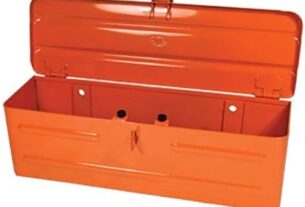Log peeling tools are essential for those who work in the forestry industry or for those who love woodworking. These tools help remove the bark from logs, making them easier to work with and giving them a smooth finish.
If you’re in the market for log peeling tools, there are many options available. In this article, we’ll go over everything you need to know about these tools so you can choose the best one for your needs.
What Are Log Peeling Tools?
Log peeling tools are used to remove the bark from logs. There are several different types of log peeling tools, including drawknives, spuds, and bark spuds.
Drawknives are long blades with handles on either end. They are designed to be pulled towards you along the surface of the log to remove bark and create a smooth finish.
Spuds are flat blades with a curved edge. They are used to remove large sections of bark at once and can be pushed or pulled along the surface of the log.
Bark spuds are similar to spuds but have a narrower blade and are used for more precise work.
Why Use Log Peeling Tools?
There are several reasons why someone might want to use log peeling tools. For those in the forestry industry, removing bark from logs is essential for preparing them for processing into lumber or other wood products.
For those who enjoy woodworking, removing bark from logs can provide a natural and rustic look to their projects. It also makes it easier to work with the wood by providing a smooth surface that’s free of bumps and knots.
Factors to Consider When Choosing Log Peeling Tools
When choosing log peeling tools, there are several factors you should consider:
1. Blade size – The size of the blade will determine how much surface area you can cover at once. If you’re working with larger logs, a larger blade may be more efficient.
2. Blade shape – Different blade shapes are better for different types of work. Drawknives are best for creating smooth finishes, while spuds are better for removing large sections of bark at once.
3. Handle design – The handle design should be comfortable to hold and provide enough grip to prevent slipping.
4. Blade material – The blade material will determine how long the tool will last and how well it performs. High-quality steel blades are typically the best choice.
5. Price – Log peeling tools can vary greatly in price. Consider your budget and what you’ll be using the tool for when choosing one.
Types of Log Peeling Tools
Drawknives
Drawknives are one of the most popular types of log peeling tools. They come in various shapes and sizes, but all have a long blade with handles on either end.
When using a drawknife, you pull it towards you along the surface of the log, taking small shavings off as you go. This creates a smooth finish that’s perfect for woodworking projects.
One thing to keep in mind when using a drawknife is that they require some skill to use correctly. If used improperly, they can cause damage to the wood or even injure the user.
Spuds
Spuds are flat blades with a curved edge. They’re designed to remove large sections of bark at once and can be pushed or pulled along the surface of the log.
Spuds are generally easier to use than drawknives and don’t require as much skill. They’re also better suited for removing bark from larger logs or for rougher work.
The downside to spuds is that they don’t create as smooth of a finish as drawknives do. If you’re looking for a clean, polished look, a drawknife may be a better choice.
Bark Spuds
Bark spuds are similar to spuds but have a narrower blade and are used for more precise work. They’re great for removing bark around knots or other blemishes on the wood.
Bark spuds require more skill to use than spuds or drawknives, but they provide greater control over the work being done. They’re also better suited for smaller logs or for more detailed work.
Log Peeling Tool Maintenance
To keep your log peeling tools in good condition, it’s important to clean them regularly and keep them sharp.
After each use, wipe down the blade with a dry cloth to remove any debris or sap. If there is any residue left on the blade, you can use a mild soap and water to clean it off.
Sharpening your log peeling tools is also essential for maintaining their effectiveness. You can sharpen them using a sharpening stone or by taking them to a professional.
Conclusion
Log peeling tools are an essential tool for those who work in the forestry industry or for those who enjoy woodworking. When choosing a log peeling tool, consider factors such as blade size, shape, handle design, blade material, and price.
There are several types of log peeling tools available, including drawknives, spuds, and bark spuds. Each type has its advantages and disadvantages, so choose one that fits your needs best.
By properly maintaining your log peeling tools through regular cleaning and sharpening, you’ll ensure they last longer and perform better.
Wiki Reference:
https://en.wikipedia.org/wiki/Bark_spud




